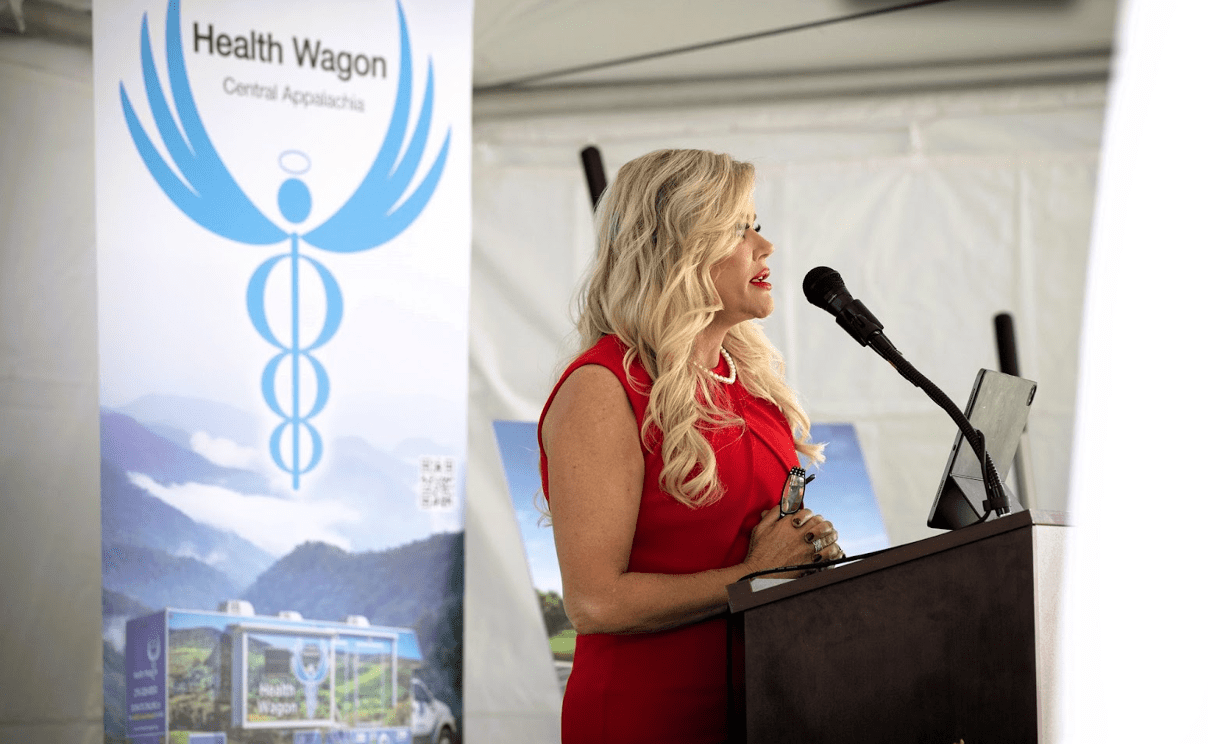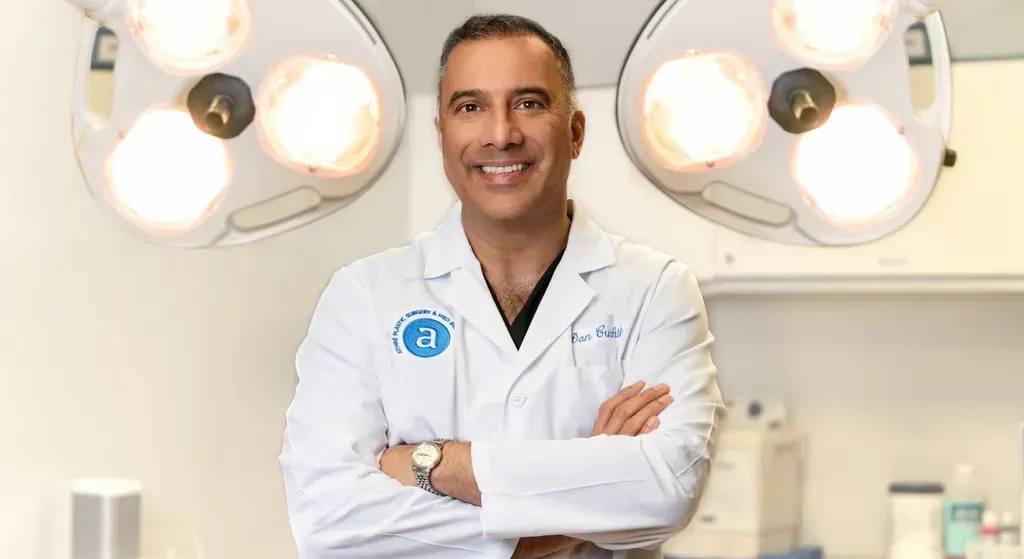Health
Dr. Teresa Tyson, DNP, Discusses The Hidden Healthcare Crisis in Remote Regions

Image source: Dr. Teresa Tyson, DNP, and Health Wagon
Access to healthcare remains a challenge for many individuals living in rural and remote areas, where medical facilities are scarce or difficult to reach. Many residents endure long travel times for even basic medical services, leading to delayed diagnoses and worsening health conditions. The lack of healthcare professionals further compounds the issue, leaving communities with inconsistent or inadequate care.
While technology and government initiatives have made strides in addressing these disparities, Dr. Teresa Tyson, DNP, notes how there are many obstacles still hindering widespread improvement. Bridging the healthcare gap requires a combination of innovative solutions, infrastructure development, and policy changes to ensure that medical services reach those who need them most.
Limited Access to Medical Care
Many remote regions struggle with a severe lack of healthcare facilities, leaving residents with minimal options for medical treatment. Hospitals and clinics are often located hours away, making even routine checkups a logistical challenge.
A shortage of medical professionals further worsens the situation, as many doctors and nurses prefer to work in urban areas with better resources and career opportunities. As a result, rural communities often rely on understaffed clinics or visiting healthcare workers who may not be available consistently. This leads to delayed diagnoses and inadequate treatment for chronic conditions. Many rural clinics operate with limited medical supplies, making it difficult to provide comprehensive care even when healthcare professionals are available.
In some cases, patients must travel long distances just to receive basic care, often at great personal and financial costs. The burden of transportation, time off work, and the uncertainty of available treatment discourage many from seeking medical attention until their conditions become severe.
Health Risks and Consequences
Delays in medical care often mean that conditions that could have been treated early turn into serious health complications. Many individuals in remote areas develop chronic illnesses that go undiagnosed for years simply because healthcare services are too far away or difficult to access. Diseases that are manageable with regular monitoring, such as diabetes or hypertension, frequently spiral out of control due to the lack of consistent medical supervision.
Beyond physical health, the absence of adequate healthcare also takes a toll on mental well-being. Isolation and limited access to mental health professionals leave many struggling with anxiety, depression, and other psychological conditions without proper support. In small, tight-knit communities, stigma around mental health can make it even harder for individuals to seek help, further exacerbating the crisis.
Preventable diseases continue to spread in these areas due to the lack of vaccinations, screenings, and early interventions. Without proper healthcare infrastructure, outbreaks of common illnesses can have devastating effects, particularly on children and the elderly. The combination of poor access, financial barriers, and limited awareness creates a cycle where minor health concerns escalate into life-threatening conditions.
Challenges in Expanding Healthcare Services
Building and maintaining healthcare infrastructure in remote regions comes with considerable hurdles. Poor road conditions and unreliable transportation make it difficult for medical professionals to reach patients, and in some cases, ambulances are unavailable, forcing residents to rely on personal vehicles or community efforts to transport those in need. In areas with extreme weather conditions, seasonal challenges further complicate healthcare delivery, cutting off entire communities during certain times of the year. These conditions make it nearly impossible for emergency medical teams to provide timely assistance in critical situations.
Funding remains a major obstacle, as rural healthcare facilities often struggle with limited financial resources. Many small clinics operate on tight budgets, lacking essential medical equipment and supplies. Without sufficient investments, these facilities cannot expand their services, making it harder to attract and retain qualified healthcare workers. As a result, many professionals opt to work in urban settings where they have access to better salaries, career advancement, and modern medical technology.
Role of Technology in Bridging the Gap
Advancements in technology are offering new ways to connect patients in remote areas with medical professionals. Telemedicine has made it possible for individuals to consult doctors without having to travel long distances, reducing delays in diagnoses and treatment. Virtual consultations, remote monitoring, and mobile health apps allow patients to receive medical advice without needing to visit overcrowded or distant healthcare facilities. In addition to telemedicine, artificial intelligence is being used to assist in diagnosing conditions remotely, helping bridge the gap in specialist care.
Despite its potential, implementing technology-driven healthcare solutions in rural regions is not without obstacles. Many areas lack reliable internet access or the necessary digital literacy to make full use of telehealth services. Even when technology is available, the cost of devices and connectivity can create another barrier, preventing low-income households from benefiting fully. Addressing these issues requires a combination of infrastructure development, education, and financial support to ensure that technology can be effectively integrated into rural healthcare systems.
Efforts to Improve Rural Healthcare
Governments and nonprofit organizations are actively working to address the healthcare challenges faced by remote communities. Investment in medical outreach programs, mobile clinics, and training initiatives for local healthcare workers has helped bring essential services to those who need them most. Some regions have introduced incentive programs to encourage doctors and nurses to work in underserved areas, offering student loan forgiveness, housing assistance, or higher salaries.
Community-led initiatives also play a crucial role in improving healthcare access. Local volunteers and advocacy groups often step in to provide educational workshops, vaccination drives, and wellness programs tailored to the specific needs of their communities. These grassroots efforts help bridge gaps where formal healthcare systems fall short, ensuring that residents receive at least some level of medical support.
Future Prospects for Remote Healthcare
Innovations in medical technology, policy changes, and raising awareness are shaping the future of rural healthcare. The expansion of telehealth services, combined with improved infrastructure, has the potential to make healthcare more accessible and efficient. Continued investment in mobile medical units and community-based programs could ensure that even the most isolated areas receive the care they need. Research into low-cost, portable medical devices is also opening new doors for remote diagnostics and treatment.
Sustained progress will depend on collaboration between governments, healthcare providers, and local communities. Long-term solutions require more than temporary programs; they demand systemic changes that prioritize equitable medical access. If these efforts continue to grow, rural healthcare systems may finally move toward lasting improvements that benefit future generations.
Health
Dr. Raghu Athré: Beyond the Surface: The Mind-Skin Connection in Aesthetic Medicine

Before becoming one of the most sought-after facial cosmetic surgeons in Houston, Dr. Raghu Athré’s academic journey began at the University of Texas at Austin, where he graduated with honors in Chemical Engineering. His deep-rooted passion for understanding how things work—both functionally and aesthetically—laid the foundation for his career in plastic surgery. For Dr. Athré, the parallels between engineering and surgery are unmistakable: both require precision, analysis, attention to detail, and strategic problem-solving.
Dr. Athré’s expertise extends beyond surgical precision. He recognizes that beauty is not just skin deep—stress, anxiety, and emotional well-being play critical roles in dermatological and aesthetic concerns. This understanding has led him to explore the field of psychodermatology, a specialty that examines the powerful connection between mental health and skin conditions.
“Psychodermatology has become a buzzword ever since a strong relationship was shown between acne patients and depression.” said Dr. Athré. “To treat these patients effectively, physicians must address both the patient’s acne and depression simultaneously for optimal results. This highlights the connection between how we look and how we feel.”
A similar trend is evident among many of Dr. Athré’s facial rejuvenation patients. Unscripted patient interviews reveal that patients feel more awake, alert, confident, and self-assured after surgery. This pattern is also observed in many rhinoplasty patients, who often change how they engage with the world post-surgery due to increased self-confidence. These observations underscore the importance of a holistic approach to patient care in contemporary aesthetic medicine.
What is Psychodermatology?
Psychodermatology examines the intricate relationship between the mind and skin, focusing on how psychological stress and emotional well-being directly influence skin health. Conditions such as acne, eczema, psoriasis, and even premature aging have been linked to stress, anxiety, depression, and other mental health struggles. This field bridges dermatology with psychological and emotional care, offering a more holistic approach to skincare and aesthetic treatments.
The mind-skin connection becomes particularly evident when a patient’s emotional state exacerbates or triggers skin conditions. For example, stress-induced acne breakouts are a common issue, as the body’s response to emotional stress can lead to hormonal fluctuations, which in turn affect the skin. Similarly, individuals battling with anxiety or depression may experience worsened symptoms of psoriasis or eczema, as emotional distress can amplify the immune response.
An Approach to Aesthetic and Skin Wellness
The rise of psychodermatology marks a shift in how both patients and healthcare providers approach skin conditions. Instead of viewing the skin as merely a surface to treat, psychodermatology emphasizes the importance of emotional and psychological health in the overall management of skin conditions. Patients dealing with skin issues are encouraged to address their emotional well-being as part of their skincare regimen, fostering not just physical but mental health in tandem.
This field also highlights the importance of treating the patient as a whole person rather than focusing solely on external beauty. While cosmetic procedures can improve physical appearance, psychodermatology helps ensure that patients are also given the tools to support their mental health, which plays a key role in maintaining long-term skin wellness.
Bridging Aesthetics, Science, and Mental Well-Being
As the understanding of psychodermatology continues to grow, there is increasing recognition of the need to treat mental health concerns in conjunction with skin conditions. Innovative treatments are emerging that combine dermatological care with psychological interventions, offering patients an integrated approach to wellness. Cognitive-behavioral therapy (CBT) and mindfulness practices, for example, can be used alongside traditional dermatological treatments to reduce stress and improve skin health.
The future of aesthetic medicine is poised to be more inclusive, recognizing that true beauty encompasses not just a person’s outward appearance but their emotional and mental well-being as well. As psychodermatology continues to evolve, it offers the potential to transform how we approach skin care, focusing not just on the exterior but on the holistic well-being of the individual.
By merging the science of dermatology with the psychology of the mind, psychodermatology provides a groundbreaking approach to skincare—one that is as much about healing the mind as it is about enhancing the skin.
For more information or to schedule a consultation with Dr. Raghu Athré, visit https://www.athrefacialplastics.com/facial-surgery/facial-rejuvenation/ or call 281-214-9324
-

 Tech4 years ago
Tech4 years agoEffuel Reviews (2021) – Effuel ECO OBD2 Saves Fuel, and Reduce Gas Cost? Effuel Customer Reviews
-

 Tech6 years ago
Tech6 years agoBosch Power Tools India Launches ‘Cordless Matlab Bosch’ Campaign to Demonstrate the Power of Cordless
-

 Lifestyle6 years ago
Lifestyle6 years agoCatholic Cases App brings Church’s Moral Teachings to Androids and iPhones
-

 Lifestyle4 years ago
Lifestyle4 years agoEast Side Hype x Billionaire Boys Club. Hottest New Streetwear Releases in Utah.
-

 Tech6 years ago
Tech6 years agoCloud Buyers & Investors to Profit in the Future
-

 Lifestyle5 years ago
Lifestyle5 years agoThe Midas of Cosmetic Dermatology: Dr. Simon Ourian
-

 Health6 years ago
Health6 years agoCBDistillery Review: Is it a scam?
-

 Entertainment6 years ago
Entertainment6 years agoAvengers Endgame now Available on 123Movies for Download & Streaming for Free
